India has a rich and unique legacy that goes back centuries and encompasses the rule of many great leaders across vast geographic areas. It has seen advancements in spirituality and science that has made it famous the world over, not least the rise of Gautama Buddha in the sixth century BC.
The foundation of the Maurya Empire by Chandragupta Maurya was another historical milestone, as was the reign of the Mauryan sovereign Ashoka. The Mughals attacked India in the 16th century, and Babur built up the Mughal Empire.
Among his descendants was Akbar who achieved many great accomplishments which have marked India’s history. The Mughal Empire began to decline after the death of the emperor Aurangzeb, and India fell under British rule before regaining its freedom in the mid-20th century.
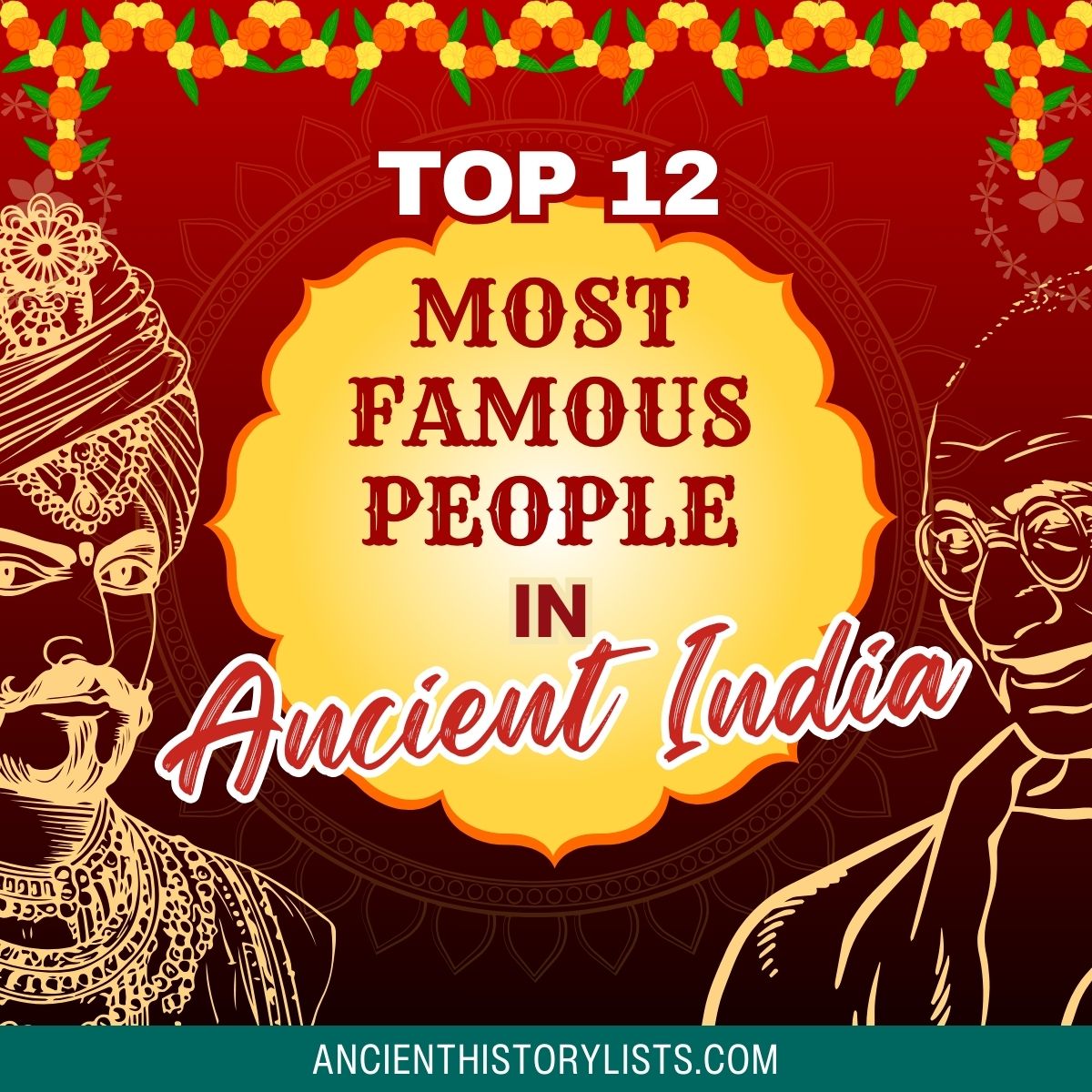
Here is a list of the 12 most amazing people in ancient India who have made the country what it is today:
1. Ahilyabai Holkar
After the death of her husband Khanderao Holkar, Ahilyabai Holkar became ruler of Malwa (present-day western Madhya Pradesh and southeastern Rajasthan). Under her, the capital of the kingdom was Maheshwar, which is currently a community in Madhya Pradesh.
Her reign lasted a long time, and she ruled with the utmost empathy and pride. During her reign, the area flourished. She was known as the “thinker ruler,” and was not afraid to use the military to defend her regime. In honor of her great leadership, Indore’s domestic air terminal and colleges all bear her name.
2. Mohandas Karamchand Gandhi

Mohandas Karamchand Gandhi was an Indian legal advisor who spearheaded India’s fight for freedom. Also called Mahatma Gandhi, he not only led India to autonomy from British rule, but also introduced the concept of social liberty and opportunity, a model which has been copied the world over.
He is best known for his peaceful methods of organizing a rebellion, leading Indians in the Dandi Salt March to challenge the British salt monopoly and launching the Quit India Movement, a mass movement requesting “a precise British withdrawal” from India.
He spent more than two decades in South Africa during which time he garnered support for social equality and led several social crusades. On his return to India, he became a central figure in the Indian independence movement, at last freeing his homeland from British colonial rule. He was a social extremist who fought for women’s rights, religious resilience, and a reduction in poverty.
3. Akbar
Akbar was a standout amongst the rulers of the Mughal dynasty and the finest Muslim ruler in India. He built up a large empire which extended across the vast majority of the Indian subcontinent.
He took control of the Mughal Empire at the very early age of 13, conquering states in the northern, western and eastern districts, particularly Punjab, Delhi, Agra, Rajputana, Gujarat, Bengal, Kabul, Kandahar, and Baluchistan, to bring the majority of India under his control.
He had an outstanding knowledge of many subjects, and promoted education and culture across the realm. He earned high regard from his non-Muslim subjects, primarily because he promoted a peaceful way of life across the country.
4. Mariam-uz-Zamani
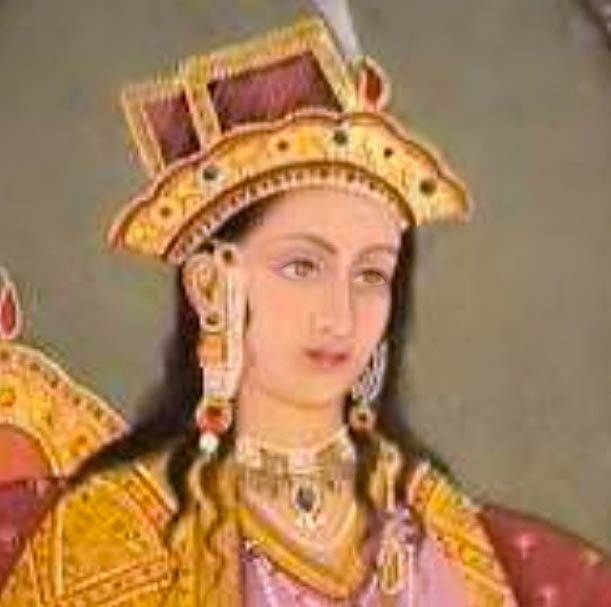
Mariam-uz-Zamani was known by many other names. According to historians, she was the third and most beloved wife of Akbar, and was offered to him by her father Raja Bihari Mal to cement a union with the Moguls, as the Rajput leaders were desperate to unite with the ruling house. However, the choice to marry a Rajput princess to a Muslim ruler led to serious opposition from many Indian rulers.
She was a strong-willed woman and a devout Hindu, filling her palaces with objects of Hindu worship. Her son, Jahangir, became the next emperor.
5. Chandragupta Maurya
Chandragupta Maurya, who established the Maurya Empire, was a strong and famous ruler. He was responsible for uniting many smaller, independent states into a single great kingdom under one central government, with the exception of Kalinga and the Tamil areas of Chera, Chola, Satyaputra, and Pandya.
He effectively destroyed the Nanda administration which governed the vast majority of northern India at the young age of 20. His grandson, Ashoka, continued his quest to conquer the rest of India, and brought Kalinga and the Tamil kingdoms under central control in 260 BC.
6. Tipu Sultan
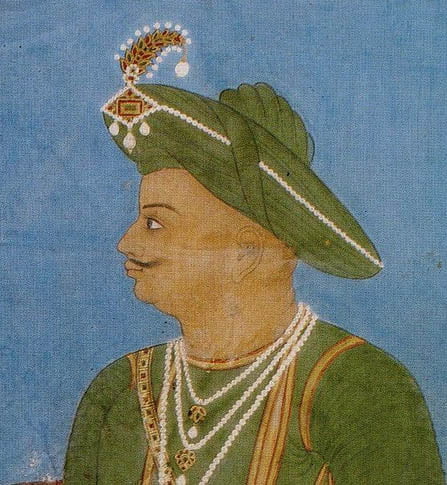
Tipu Sultan was a leader of the Kingdom of Mysore, well known for his bravery in the wars against the British East India Company. Famous for his courage and strength, he is viewed as the first real Indian rebel against British rule. The Treaty of Mangalore was signed by Tipu Sultan and the East India Company to mark the end of the Second Anglo-Mysore War. This was the last time that an Indian lord dictated terms to the British.
As the oldest child of Sultan Hyder Ali of Mysore, Tipu Sultan rose to the position of leader after his father died in 1782. As ruler, he made several significant improvements to his regime, including the development of the iron-cased Mysorean rockets which were later used against the British. His father had had strategic political connections with the French, and because of this, Tipu Sultan received military training from French officers from an early age.
7. Razia Sultan
Razia Sultan was the Sultana of Delhi from 1236 to 1240 and was the most famous Muslim female ruler. Her rise to the position of authority is noteworthy mostly because she was a woman, but also because her ancestors had been slaves. Her father, Iltutmish, had come to Delhi as a slave and served under Qutb al-Din Aibak, the Sultan of Delhi, gradually rising to the position of advisor.
Upon Qutb’s death, Iltutmish enlisted the help of the Turkish nobility and became the sultan himself. As a ruler, Iltutmish made history by becoming the first sultan to choose a woman as his royal successor when he named his young daughter Razia as his obvious heir. Razia was a strong young woman and was indeed qualified for the throne. However, her ascent to the honored position did not come easily.
Her brother had assumed the position of authority after the death of the king, and she could only take up her rightful place after her brother died. As soon as she became the Sultana of Delhi, she wore manly armor and was known to be a proficient and honorable ruler.
Committed to her realm, she was well regarded by her subjects. The courageous sultana met a disastrous end when another brother tried to usurp her and she was killed in the subsequent battle.
8. Krishnadevaraya
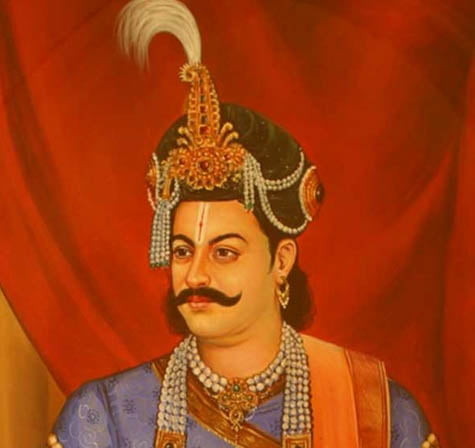
Krishnadevaraya was a leader of the Vijayanagara Empire in South India. As the third leader of the Tuluva dynasty, he expanded the kingdom into the vast majority of South India, which included present-day Karnataka, northern Tamil Nadu, and Andhra Pradesh, and upwards in the east to Cuttack.
He rose to a position of power when the empire was still relatively small and was responsible for its subsequent expansion and prosperity. He successfully overcame the Bahmani sultans and the Portuguese, forcing them to withdraw their plans to expand their regimes. Krishnadevaraya was known by various titles given to him as a mark of respect such as Kannada Rajya Rama Ramana (Lord of the Kannada Empire) and Mooru Rayara Ganda (King of the Three Kings).
9. Guru Gobind Singh
Guru Gobind Singh was the last of the 10 Sikh gurus. A spiritual master, warrior and philosopher, he was the son of the ninth Sikh guru, Tegh Bahadur, who was killed by the Mughal emperor Aurangzeb. Aged only nine when his father died, he succeeded him as a Sikh leader at this young age. The torture and execution of his father affected the young man profoundly, and becoming a guru at such a young age placed a huge responsibility on his shoulders.
He established the rules of the Khalsa and concept of the “Five Ks,” or five articles of faith, to Sikhism. He delivered the Guru Granth Sahib, or principle scripture, to his companion Bhai Mani Singh shortly before his death, and this text became the eternal living guru for Sikhs.
10. Ashoka
Ashoka, otherwise known as Ashoka the Great, was the third leader of the Mauryan Empire and one of the greatest and most fearsome rulers of India who ruled over almost the whole Indian subcontinent apart from some parts of Tamil Nadu and Kerala. However, it was the conquest of Kalinga, seen as the bloodiest and most deadly battle, which left him broken and changed him from a ruthless and ambitious leader to a quiet and peaceful one.
He has been largely credited with the spread of Buddhism across the world. He commissioned the building of various stupas, or monuments, across the realm and had many columns built, the most famous of them being the Ashoka Column at Sarnath. The four lions at the top of the column became a national symbol for India.
11. Shivaji
Shivaji was an incredible Maratha ruler who set up the Maratha kingdom in western India. Raised by his parents’ manager, Dadoji Konddeo, Shivaji became a fearless warrior at the young age of 16, and was highly skilled in many battle techniques. His most famous victory was during the Battle of Pratapgarh against the Bijapur sultan’s general, Afzal Khan. This marked the defeat of the great Bijapur force and cemented Maratha power in the western region.
He also took on the Mughal Empire, defeating their army at Pune, but was later defeated by the Mughal forces and made to sign the Treaty of Purandar which saw him surrender countless strongholds. He was later captured at Agra but managed to escape and tried to recapture the positions he had surrendered by signing the treaty.
As well as the Deccan region, he brought large parts of South India under his rule. He declared himself as the ruler of the Maratha kingdom and took the title Kshatriya Kulavantas Simhasanadheeshwar Chhatrapati Shivaji Maharaj.
12. Maharana Pratap
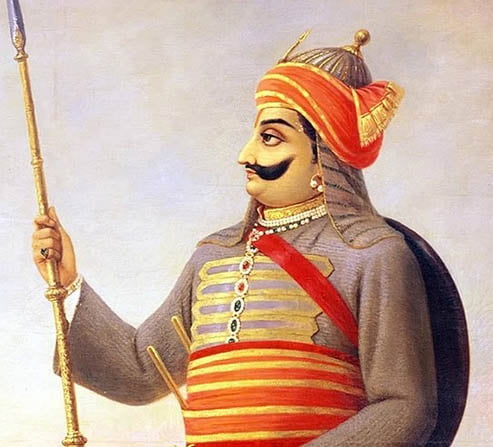
Maharana Pratap was a Hindu maharaja of the Rajput alliance of Mewar in present-day Rajasthan. Well known for effectively opposing the Mughal sovereign, Akbar, in his attempts to seize his territory, he assumed legendary status in Rajasthan. Maharana Pratap was hailed as a gutsy and fearless warrior who would not submit to the Mughal attack. He vigorously defended his territory and his people to the last.
The oldest child of Rana Udai Singh II, he showed his valor and commitment even before he came to power. While a few of Pratap’s brothers (Shakti Singh, Jagmal, and Sagar Singh) served the Mughal ruler, Akbar, Pratap never submitted to Mughal force. On his death, he was hailed as a saint and he is commemorated on the holiday of Maharana Pratap Jayanti.
Conclusion
These remarkable people are just a few examples of the various exemplary individuals who existed in ancient India. There are many more characters like these hidden in the history books, so if you have enjoyed learning about these 12, go ahead and discover some more!